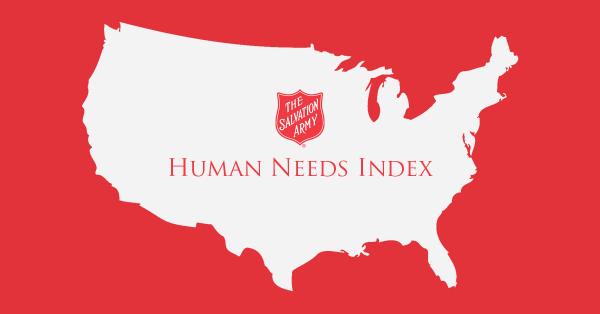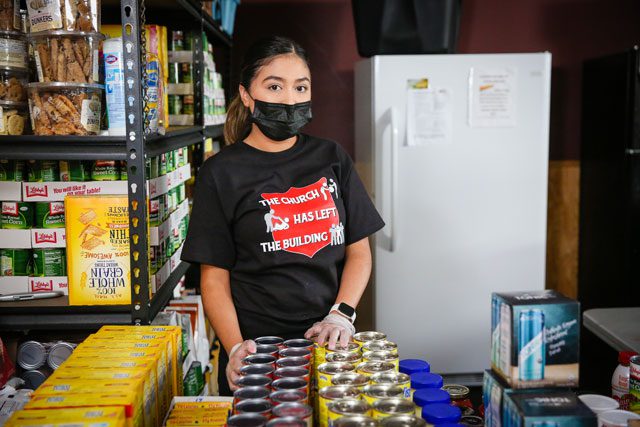The measure, based on nonprofit services data, provides new look at poverty.
The Salvation Army and the Indiana University Lilly Family School of Philanthropy today announced a new, multidimensional measure of human needs based on objective data. With more than 45 million Americans living in poverty, according to government measures, the Human Needs Index (HNI) will serve as a powerful tool to track basic human need, with different indicators and less lag time than conventional government data.
“Poverty is among the most complex issues facing society, and the Human Needs Index reflects that complexity by providing a better understanding of the multiple facets of need confronting poor individuals and families,” said Dr. Amir Pasic, Eugene R. Tempel Dean of the school. “Its sensitivity to changes in need based on actual service provider data offers insights into trends and patterns that can help inform decision-making and the broader societal discussion about alleviating poverty.”
A standardized index, the HNI includes seven types of services representing basic human needs: meals provided, groceries, clothing, housing, furniture, medical assistance and help with energy bills. They were selected from more than 230 service variables consistently tracked across time and regions by The Salvation Army. The HNI aggregates these seven indicators at national and state levels, at monthly intervals since 2004.
Until now, poverty generally has been tracked in three primary ways. First, the official U.S. poverty rate is published by the Census Bureau every September; it reports on the previous year and draws on income figures as reported to the government. Second, the official U.S. unemployment rate is published each month by the Department of Labor’s Bureau of Labor Statistics and covers the previous month; its relation to the state of need is indirect, as it does not capture those who may be employed but still in need—the working poor. Third, the federal Supplemental Nutrition Assistance Program reports usage each month, with a three month lag, but addresses just one aspect of basic human needs.
The HNI is a complementary tool to these government measures because it draws on private, nonprofit data and focuses on the self-identified need for basic human services. It provides timely information such as monthly changes in those needs and reports on them quarterly, delivering immediacy and accessibility that other measurements lack.
“With more than 130 years of serving millions of people in the United States, The Salvation Army has a treasure trove of data about the most basic human needs,” said Commissioner David Jeffrey, national commander of The Salvation Army USA. “It is time to put all that data to use. We hope the HNI becomes an important tool for policy leaders, researchers and other social service providers to help our country become increasingly responsive to the needs of the poor.”
The HNI provides both national and state metrics, revealing variances in need at the state level that may be due to factors such as seasonal differences, historical regional discrepancies or the effects of major disasters. For instance, researchers noticed a spike in requests for assistance with energy bills in April. That is because in many communities, it is illegal to shut off electricity during the winter months, so overdue energy bills come due in April. The data also show that natural disasters have an impact on needs in neighboring communities in addition to communities that are directly affected.
“Since the Great Recession, there is growing attention to poverty and vulnerability in the United States, which is still at high levels in some areas,” said Una Osili, director of research for the Lilly Family School of Philanthropy. “The Salvation Army has a presence in communities across the country, urban and rural, and has historically collected very timely information on the provision of housing, food and many other aspects of human need, allowing the HNI to draw on data that has not previously been available.”












